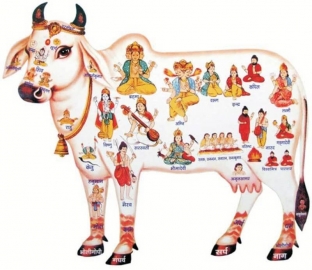Those readers who have previously encountered Vedic culture probably have an idea of what Ekadashi is. For the rest of the readers who followed only the classic postings, this will be a new practice. Ekadashi is primarily dry fasting, which excludes any consumption of food, including water for & nbsp; every 11th day of the rising and falling moon. In this article, we will take a closer look at all aspects of this process, how it is safe for health and how to starve correctly with estet-portal.com.
What is Ekadashi, how and on what days to fast?
It is believed that every 11th day of the rising and falling moon has a good effect on cleansing and restoring the body as a whole. Ekadashi is translated as eleven. At this time, there is an update not only on the physiological, but also on the spiritual and energy level. The right time for dry fasting – this is the 11th and 26th day of the lunar calendar. The body not only gets rid of toxins, rejuvenates, there is a gentle cleansing of the body, the energy level rises, and its karma is also cleared.
Rules and basic principles of dry fasting
Let's see how fasting correctly on Ekadashi days:
- before the day of dry fasting, it is not recommended to eat too heavy and fatty foods, as this can lead to additional thirst and bring additional discomfort;
- fasting must begin at sunrise and end before sunrise the next day;
- if you cannot completely abstain from food, then you need to exclude certain foods: any meat products, seafood, all grains and legumes, cereals, spinach, honey, sea salt, eggplant, vanilla, sugar, onions, garlic, tomatoes, beets, mushrooms);
- the main thing to understand is that Ekadashi – this is not just fasting, it is, first of all, the observance of moral and ethical principles and getting rid of any negative factors, this is the purification of not only the body, but also the soul;

How to get out of dry fasting?
Before practicing this type of fasting, one must learn how to properly exit the state of dry fasting. Correct observance of this procedure – the guarantee of your well-being and the benefits of Ekadashi, and so:
- in the morning before dawn, you need to drink 0.5 liters of water with a teaspoon of table salt dissolved in it, which will allow you to restore your water balance, you can add the juice of half a lemon;
- after 20-30 minutes you can eat a banana;
- then you can add freshly squeezed juices, yogurt and other fruits (for those who have stomach problems, juices must be diluted with water).
What problems can be associated with Ekadashi?
First of all, you need to know that if you are just starting to practice this type of fasting, then such reactions of the body as: vomiting, nausea, heart rhythm disorder, headache, pain, blood pressure disorder. General weakness, etc. however, these symptoms will not accompany you permanently if your practice is regular. They arise only because the body is struggling with clogging and toxins. When the cleansing of the body is over, the symptoms will disappear.
Dry fasting is not recommended if you suffer from: tuberculosis, circulatory diseases, malignant tumors, thrombophlebitis, or if you are underweight.
It is strictly forbidden to observe Ekadashi while pregnant, breastfeeding or while taking strong drugs.
If you have gallstones or urolithiasis, it is recommended to use water during fasting.
Should or not practice Ekadashi?
Each person decides for himself what his body and soul need in a certain period of time. There are different opinions about the benefits and harms of this type of fasting. Like any post, Ekadashi implies, first of all, not only the refusal of food & nbsp; and water, but also spiritual abstinence and purification. Doing good, broadcasting positive energy, enjoying the process of restoring vitality, that's what is most important.
Love yourself, take care of the people around you and fast properly with estet-portal.com.






Add a comment